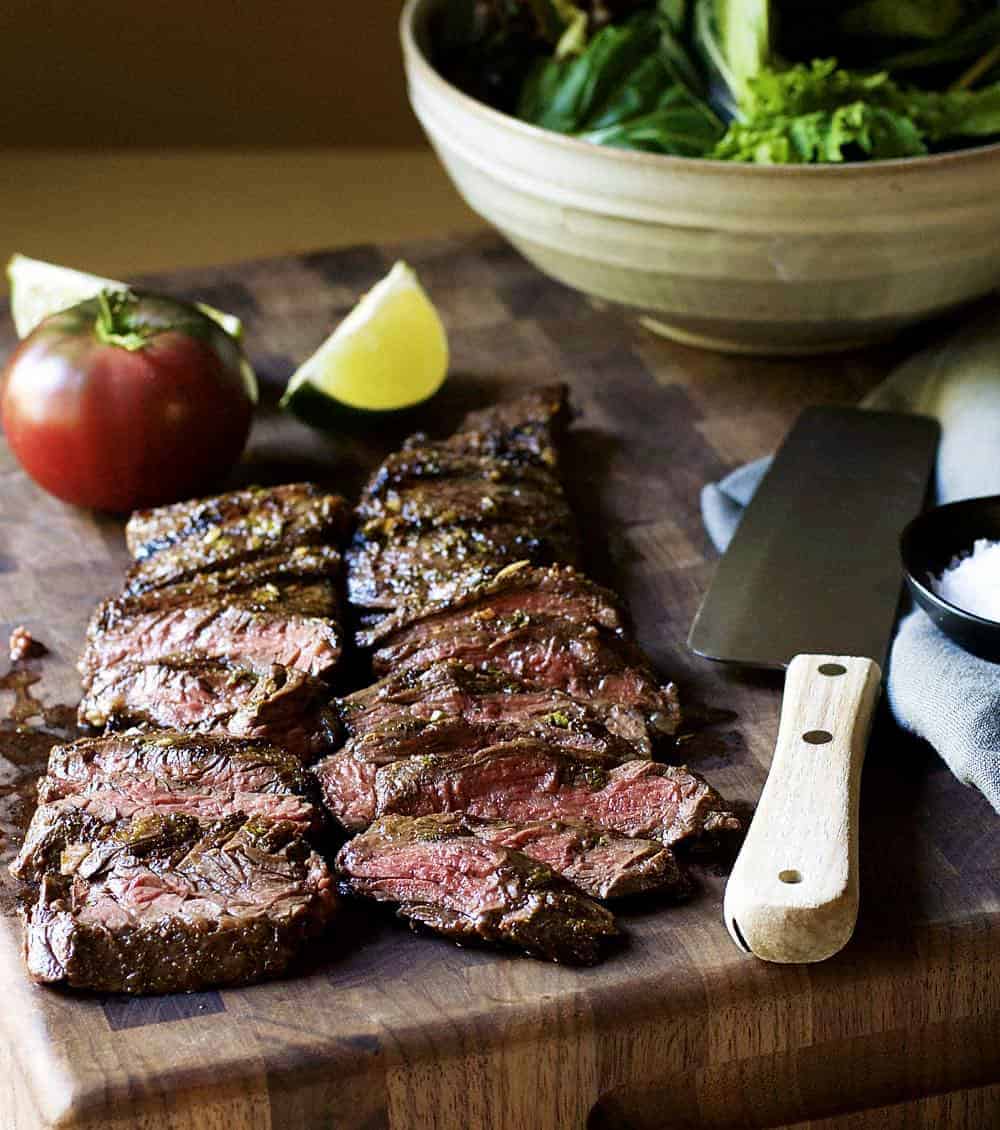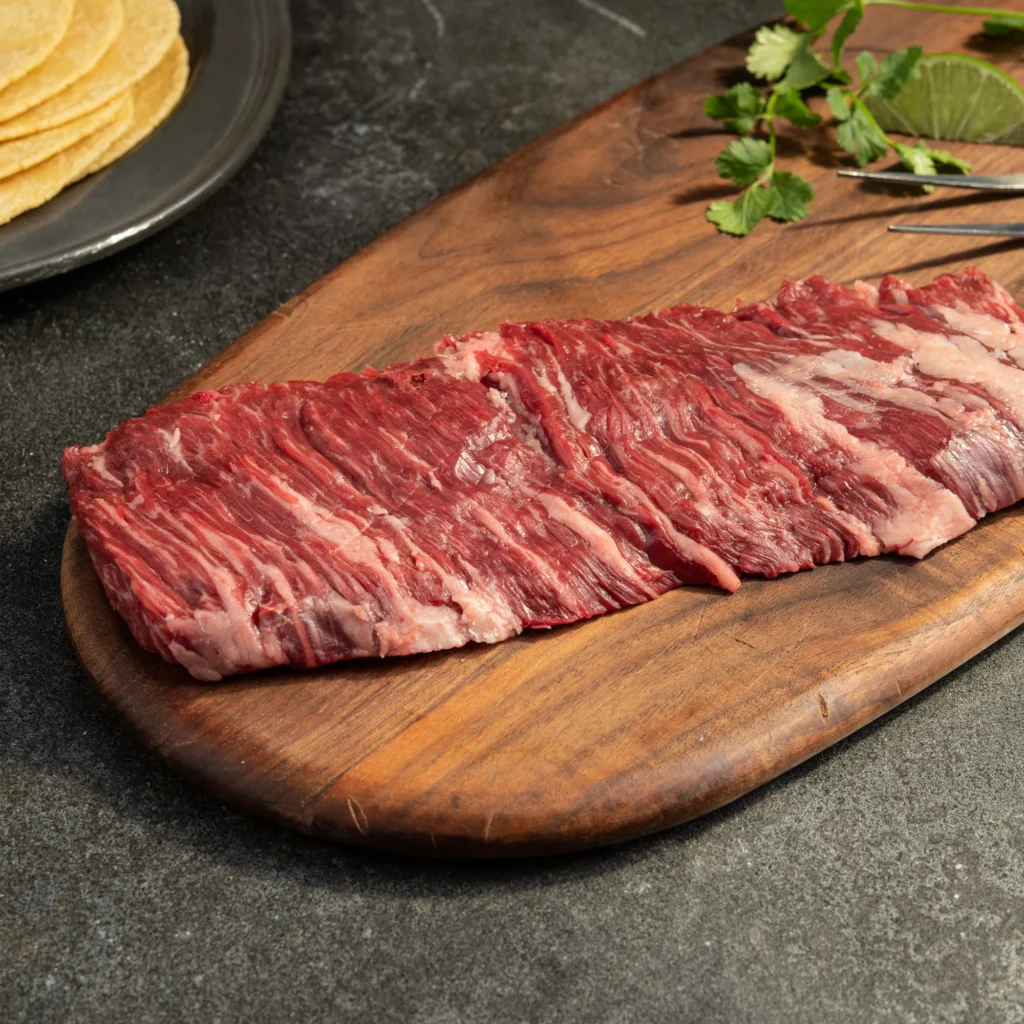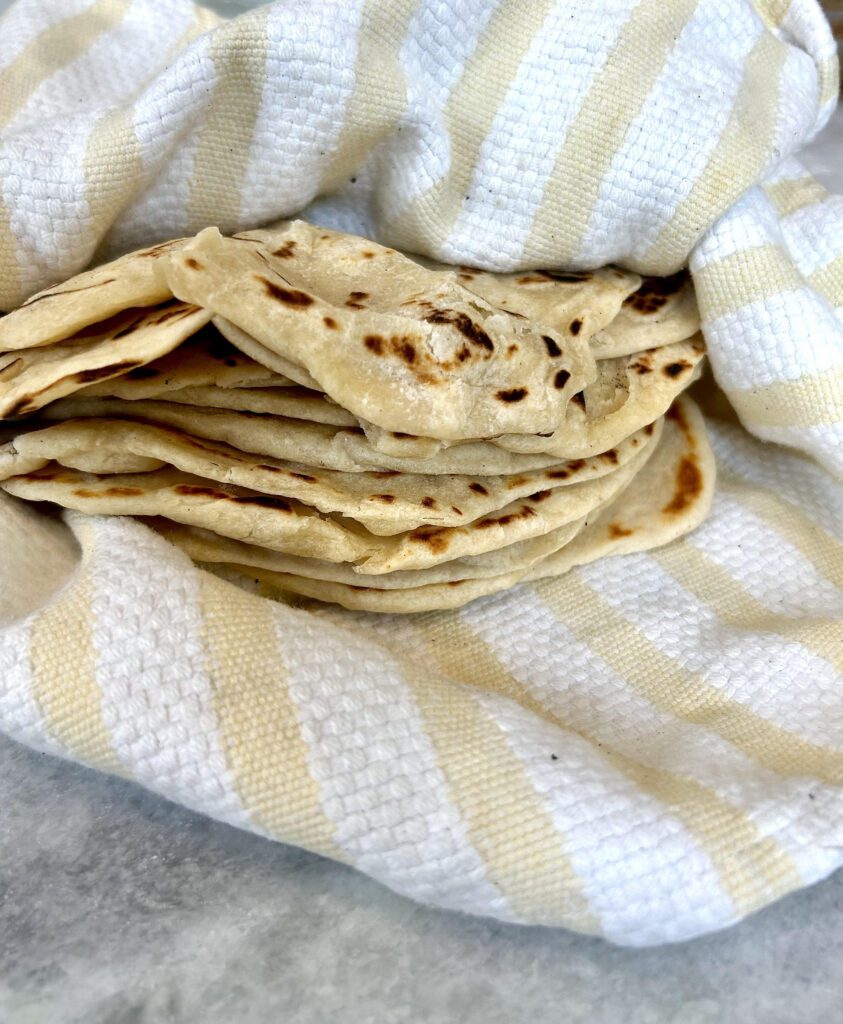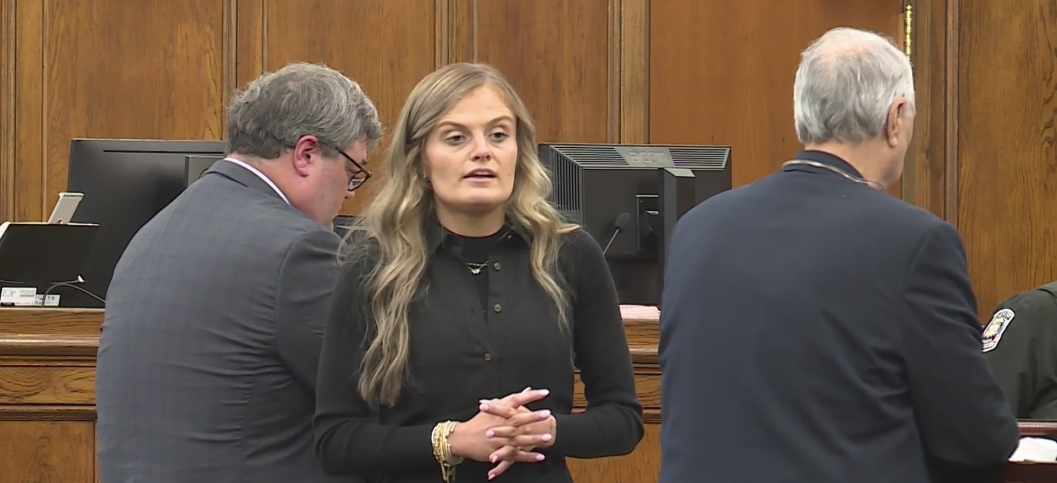
Inspired by a recent trip to Texas, here is a complete Tex Mex meal featuring tender carne asada, pillowy homemade flour tortillas, a spicy roasted salsa tatemada, and a margarita for good measure. Muy bueno. Enjoy.
After reflections on smoking succulent pork butt, the next logical mountain to climb might have been the smoked brisket. It’s day is coming, but alas, today is not that day. Instead, a recent trip to Texas inspired a different pursuit in the “test kitchen.”
My bride, a Mississippi girl who grew up in Texas, first introduced me to real “Tex Mex.” While Mississippi’s run of the mill Mexican food is fine, in my humble estimation, it does not live up to the quality and flavors found in the Lonestar state.
As I sat down to a sizzling platter of fajitas at Ninfa’s in Houston, it got me thinking: could you reproduce this? Having had the question, I needed the answer.
I settled on trying to produce three basic components of quality Tex Mex: carne asada (marinated steak), homemade flour tortillas, and salsa tatemada (roasted salsa). For good measure, I threw in some pollo asada and salsa roja…and also some margaritas.
Carne Asada
The secret to genuinely good carne asada is the right cut of meat, the right marinade, and a smoking hot grill. Answering the cut question is simple. Outer skirt steak is what you want. It has a strong beef profile and plenty of flavorful fat that melts into the meat as it cooks. Its craggy texture holds the marinade and allows it penetrate the meat. It’s tender, but with the right amount of bite. Just a wonderful cut.

There are a wide variation of marinade recipes for carne asada. Mine ended up being a melding of the most highly regarded recipes on the interweb. Here it goes:
- 1 Cup of Orange Juice
- Juice of 3 Limes
- 2 Tablespoons Olive Oil
- 2 Tablespoons Soy Sauce
- 2 Tablespoons Worcestershire Sauce
- 1 Tablespoon of Red Wine Vinegar
- 2 Ancho Chiles
- 2 Serrano Chiles
- 2 Chipotles in Adobo Sauce
- 3 Cloves of Garlic
- 1 Small Bunch of Cilantro
- 1 Tablespoon of Kosher Salt
- 1 Tablespoon of Adobo Powder
- 1 Tablespoon of Ancho Powder
- 1 Tablespoon of Cumin
- 1 Tablespoon of Mexican Oregano
Yes, that is a lot of stuff. You can certainly cut out some of the dry seasonings or get by with just one kind of pepper if it feels like too much of a headache to track stuff down.
And yes, the list includes soy sauce. No, you are not making Mongolian beef. You won’t taste the soy sauce. It adds sodium, but more importantly, it does magic on the texture of the beef, breaking it down and making it more tender. Trust me.
Put all the ingredients in a blender and, um, blend. Pour over your meat. Let the steak marinade between 4-6 hours. Pull the steak out of the marinade and season gently with salt and pepper. There will already be quite a bit of flavor imbued into the steak from the marinade.
Now, get a grill extremely hot. I put lump charcoal nearly to the grate level of my Green Egg and get it glowing. Skirt steak cooks quickly. So the challenge is to get a char on the outside while not overcooking the inside. On a properly heated grill, you will do 2-3 minutes per side of the skirt steak, get a nice char, and have a medium internal temp.

Let it rest for a few minutes. Now, this is important: you want to slice the steak against the grain. If you cut it with the grain, you will be missing out.
I should mention that I split the marinade and poured half over some chicken breasts we had on hand to make pollo asado. It was almost as delicious as the steak. Almost.
If you’re going to throw your steak onto one of the fluffy flour tortillas below, I just dice some white onion and cilantro and douse it with some salsa. That said, your taco, your rules.
Flour Tortillas
Now, I know street tacos are made with corn tortillas. Corn tortillas are delicious. But there is something about a good hot flour tortilla that speaks to me. It says “eat me.” In most Mississippi Mexican restaurants flour tortillas are thin, lifeless, and relatively flavorless. The ones in the store are even worse.
In Tex Mex, tortillas are thicker and chewier. They have texture and are more than a delivery vehicle for meat and goodies. They can be their own course with a little mantequilla (butter). Making something that closely resembles the Texas product was surprisingly easy. My family, including my discerning Texas-raised wife, devoured these. Here’s what you need:
- 4 Cups of All Purpose Flour
- 3 Teaspoons of Salt
- 2 Teaspoons of Baking Powder
- Half a Cup of Vegetable Shortening or Lard
- 2 Tablespoons of Vegetable Oil
- 1.5 Cups of Warm Milk
If you are looking at the shortening and vegetable oil thinking, “that doesn’t sound healthy,” you’re probably right. But fat is a major component of any tortilla recipe. It’s what allows a tortilla to fold without breaking. It gives chew and flavor.
Add all of your ingredients, except for the milk, to a mixing bowl. Kneed them together so that shortening mixes with the flour. Heat your milk in the microwave for 45 seconds or so. It doesn’t need to be scalding, just warm. Slowly add your milk to the mixture and begin working it into the flour. You will kneed for 3-5 minutes to form it into a slick ball.

Cover it with a damp dishcloth and let it proof for 20-25 minutes. Uncover it and divide the dough ball into 16 equally sized balls. Cover those and let them proof for another 10 minutes. Now get sprinkle both sides of the dough balls with flour and flatten them into a 4 inch circle. Rub a rolling pin down with some flour and roll out your 4 inch circles into 8 inch circles.
Do not worry if they are not perfectly round. Weird shapes make them more authentic, or at least that’s what I told my family. Now, get a cast iron skillet piping hot. Toss the tortillas into the dry skillet (no more fat) for 30-40 seconds per side. They should start to bubble as they cook and when you flip, you’ll notice browned spots on the surface.
Stack up your tortillas and wrap in a dish towel to keep warm. All 16 of the tortillas I made were gone within 2 hours in our four-person family.
Salsa Tatemada
Most Mexican restaurants in Mississippi serve a version of “salsa roja” that loosely approximates tomato puree. There isn’t a lot of flavor, texture, or heat. It’s serviceable, but not great in my opinion. Tex Mex salsa, particularly that served in south Texas is different.

Salsa tatemada basically just means “roasted salsa.” It brings a lot of flavor to the party and is often served warm. Here’s what you need and how you make it:
- Six Roma Tomatoes
- 2-3 Serrano Chile Peppers (To Taste)
- 2 Chipotles in Adobo Sauce
- 1 Small Yellow Onion
- 5 Cloves of Garlic
- 1 Small Bunch of Cilantro
- 1 Tablespoon of White Vinegar
- Juice of 1-2 Limes (To Taste)
- Half Tablespoon of Kosher Salt (To Taste)
Turn your oven broiler on high. Cut your tomatoes and onion in quarters. Remove the stems from serranos and cut them in half lengthwise. Some people advise to remove the seeds and white vein that run down peppers. That’s where the heat of the peppers is. I like the heat or I’d just buy a bell pepper. I don’t remove the stems. Peel the garlic cloves. Now place your tomatoes, onion, serranos, and garlic on a baking pain and broil the heck out of them. They need to blister and char. Black exterior is good.

Once charred, take your vegetables out of oven and add them to a blender along with all of the remaining ingredients. Pulse to blend. I like to leave some texture in the veggies so I stop short of puree. Now, put in a pot and cook for another 10 minutes or so. The mixture will be thick because of the roasting process on the vegetables. Add a cup of water and stir. Taste to see if you need to add more salt. Serve. (It will be better the next day).
Alternatively, you can make a salsa roja (basic table salsa) with largely the same ingredients. The only difference is that you won’t roast your vegetables before blending and won’t add the chipotle peppers in adobo sauce. Blend all of your ingredients together and then bring to a simmer on the stove for 20 minutes. Remove from stove and refrigerate for two hours before eating. This will allow the flavors to meld.
Note: If you’re making the non-roasted variety (salsa roja), when you first blend the fresh ingredients, it will look kind of pink. Don’t be turned off by this. It will “redden” up as it cooks.
Second Note: If the serranos in either recipe are too hot for you, you can reduce the number or substitute jalapenos. I recommend against it. Serranos’ heat profile is one of the stars of the salsa. It’s one of the things that will distinguish what you make from Mississippi salsa.
One Margarita, Two Margaritas
Among the various songs floating out there about margaritas, I’ll stick to the relatively wholesome Luke Bryan tune One Margarita:
Everybody here ain’t from here
But we’re here doin’ our thing
Lettin’ go a little, little by little
Sippin’ on a frozen drinkOne margarita, two margarita, three margarita, shot
Don’t worry ’bout tomorrow
Leave all your sorrow out here on the floatin’ dock
I don’t know how authentic our recipe is for margaritas, but it comes courtesy of my father-in-law in Texas and it’s legitimately good and really simple.
Step 1: Do not buy margarita mix. It’s syrupy, too sweet, and overpowering. Instead, buy frozen limeade concentrate and real limes for your lime profile. You’ll thank me.
- 12 Ounce Can of Frozen Limeade Concentrate
- 8 Ounces of the Tequila of Your Choice
- 6 Ounces of Triple Sec
- 6 Ounces of Water
- 2 Ounces of Grand Marnier
- Fresh Lime Juice
- Ice
Pour of all your liquids into the blender. Squeeze the juice of 2-3 limes in for good measure. Fill it with ice. Blend. Salt a glass, pour your frozen goodness, plop in a wedge of lime, and drink. Cheers!











